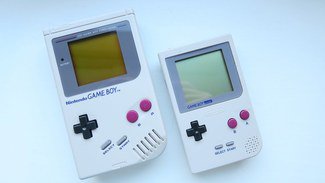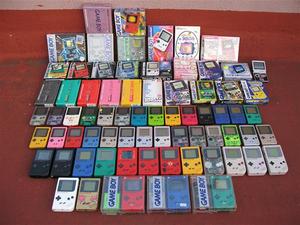Do you Know the Different Types of Gameboys?

When the first-ever Nintendo Game Boy burst onto the scene in 1989, very few people, including the Game Boy gurus at pocketheaven.com could predict that it would dominate the hand-held console market for decades to come. Today, the Nintendo Game Boy is one of the most iconic gaming devices in the world and continues to deliver quality electronic games. The following is a list of the different types of Game Boys and what made each so popular. You should know that all these games are also available at online casinos, where you can play them and win real money. Stay regularly updated on the latest online casino bonuses, only by following https://www.nodepositroom.com/. Learn what kind of offers can get the new players with their signups, and how they can start depositing.
The Original Game Boy
The original Game Boy was an 8-bit console released on the 100th anniversary of Nintendo. The sides were designed to fit the curves of your hand with A-B buttons and a directional pad neatly spaced out, while two AA batteries powered the unit for up to 15 hours of game time. What made the Game Boy so hugely popular is that it became the standard by which all hand-held consoles would be measured. Never before had a device featured such quality games which could easily be enjoyed with friends through a multi-link port that can connect multiple Game Boys for epic multiplayer battles.
The Game Boy Pocket
The Game Boy Pocket was released in 1996, a whole 7 years after the original, and was smaller, lighter and came with a black and white LCD screen as opposed to the black and green of its predecessor. The Pocket is also the first model to make use of a much smaller link port, which became the standard for all future models. The Game Boy Pocket was, in more than one way, a refinement of the original rather than a whole new model ꟷ it was even compatible with all previous games.
The Game Boy Light

Although only available in Japan, the Game Boy Light was launched on April 14, 1998, and marked an era of innovation ꟷ it is much smaller than the Game Boy Pocket and features an electroluminescent backlight for low-light conditions. The Game Boy Light also has space for two AA batteries which provide approximately 20 hours of game time (a significant improvement when compared with previous types of Game Boys). Lastly, the Game Boy Light was available in two different colours: gold and silver.
The Game Boy Color
The Game Boy Color was released in 1998 and is the first model to feature a colour screen. It also features as much faster processor than previous models and uses two AA batteries that produced over 30 hours of game time. Even more impressive is that the Game Boy Color is the first model to allow the transfer of information between two systems via an infrared port. It was discontinued in 2003 to make way for something truly exciting, the Game Boy Advance.
The Game Boy Advance
While there are many different types of Game Boys, none were as powerful as the Game Boy Advance. With a built-in 32-bit processor, the Game Boy Advance offers the same graphics capability of a console system in a hand-held device. It uses two AA batteries which deliver up to 15 hours of game time and came in various colours: indigo, arctic, white, pink, and spice. Its successor, the Nintendo DS, was released three years later in 2004.
The Game Boy Micro
The Game Boy Micro was released in 2005 and retains some of the functionality of the Game Boy Advance, however, doesn't offer backward compatibility due to extensive design changes. As a result, only the latest Game Boy games for this model can be played. The Game Boy Micro is powered by a 32-bit processor and came with a built-in rechargeable lithium-ion battery. Something Micro has that other types of Game Boys didn't, is interchangeable faceplates that came in a variety of colours.